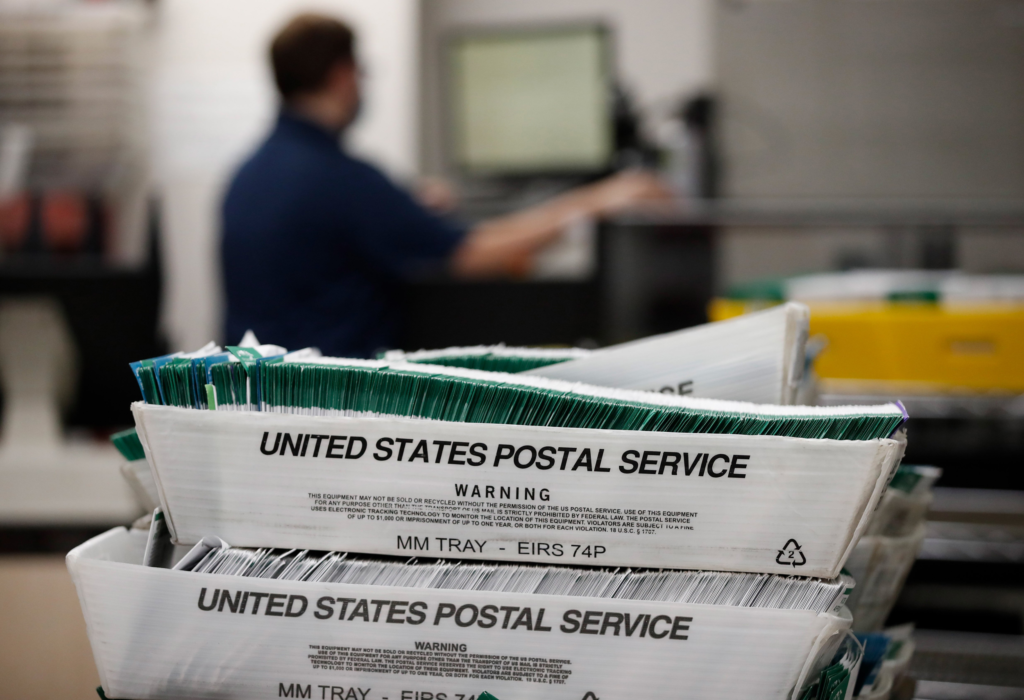Supreme Court Rules on Mail-in-Ballots Weeks Before Election Day

Image courtesy of NBC News
By Jeremy Perillo
The Supreme Court ruled two weeks before Election Day that Pennsylvania mail-in-ballots received within three days of November 3 will be counted even if they do not have a legible postmark.
Pennsylvania Republicans were seeking an emergency stay, as they argued the state legislature should be making election decisions, and not the state courts. They also warned against the lower court’s decision that ballots cast after election day could be counted.
Given that there remains an absence following the passing of Justice Ruth Bader Ginsburg, the Court ruled four to four. This means that the lower court standing remains and no precedent is set by the decision.
Of course, Amy Coney Barrett’s confirmation to become the next Associate Justice of the Supreme Court may have an impact on future mail-in-ballot cases. Some of the Court’s conservatives – Justice Clarence Thomas, Brett Kavanaugh, Samuel Alito, and Neil Gorsuch – wanted to strike the lower court’s decision while the three liberal justices – Stephen Breyer, Elana Kagan, and Sonia Sotomayor – wanted to uphold the order.
Chief Justice John Roberts sided with the liberals on the Court, in what has become commonplace for him seeking to preserve the institution’s respect and interests. Once considered a conservative stalwart, Roberts has seemingly shifted dramatically to the center, siding with the liberal justices on big-ticket issues like Obamacare in National Federation of Independent Business v. Sebelius.
The Court’s ruling, and the lawsuits surrounding mail-in-ballots, comes as millions of Americans turn to alternative methods of voting in person as the United States battles the coronavirus pandemic. Both parties have picked their corners on the issue and have led to various perspectives on how voting should be handled across the country.
A state like Pennsylvania receives heightened attention for being a swing state, or a state which is not typically republican or democrat and is actively sought by candidates in a presidential election. Pennsylvania and Wisconsin are the only two swing states that can only begin processing mailed-in-ballots on election day, which is likely to delay the results for several days.
Given the Supreme Court’s ruling, the votes of thousands of Pennsylvanians that could have been rejected for arriving after Election Day will now be counted. The unknown, and potentially controversial question, surrounding this ruling is if the effect of this decision could turn the tide for various races. Of course, that may never be known, but it is understandable why Republicans are wary of loose mail-in-voting rules, as they have lobbied and attacked mail-in-voting for several months.
In addition to their Pennsylvania ruling, the Supreme Court ruled on voting rules for Wisconsin mail-in-ballots nearly a week before election day. The Court upheld voting laws affirming that ballots must be in the hands of election officials by the close of polls on Election Day.
Even with an absent justice, the Court ruled to reject attempts to alter the mail-in-ballot deadline by a 5-3 vote. As compared to the Pennsylvania case, Chief Justice John Roberts voted with his fellow conservatives in the majority. The Court’s three liberals dissented from the ruling.
The Justices ruling was based on the idea that the courts should not be the ones to dictate election laws, and that should rather be left to the State legislatures to decide.
“The Constitution provides that state legislatures — not federal judges, not state judges, not state governors, not other state officials — bear primary responsibility for setting election rules,” Justice Neil Gorsuch wrote in a concurring opinion.
In her dissent, Justice Elana Kagan noted that it is the primary responsibility of the legislature to make such ruling, but cited the Wisconsin state legislature had not met since April and was hence not able to make effective decisions on election rules.
“On the scales of both constitutional justice and electoral accuracy, protecting the right to vote in a health crisis outweighs conforming to a deadline created in safer days,” Kagan wrote.
As the Supreme Court becomes fully staffed once again, and the U.S. quickly approaches Election Day, the American people will no doubt hear more from the Courts in the wake of the election, as possible lawsuits are filed over ballot rules and election results.







